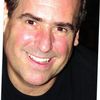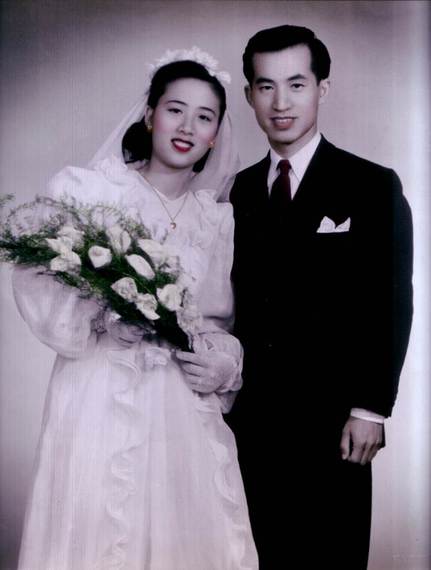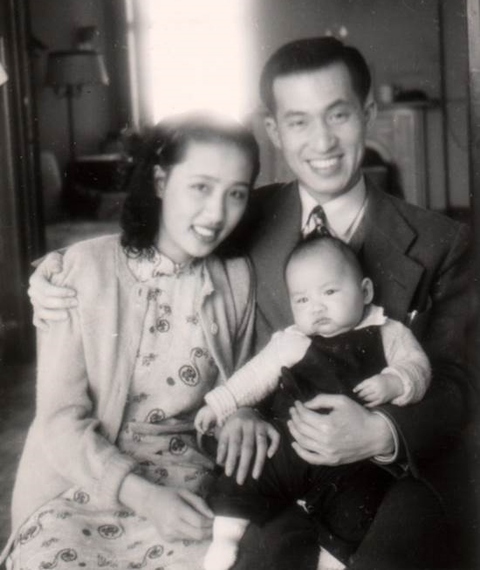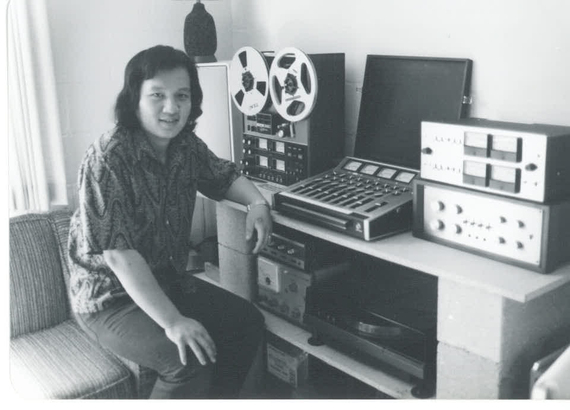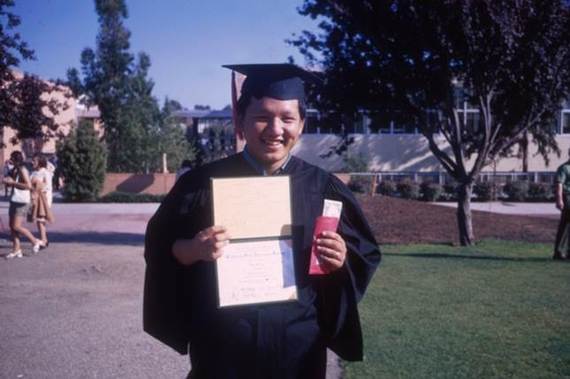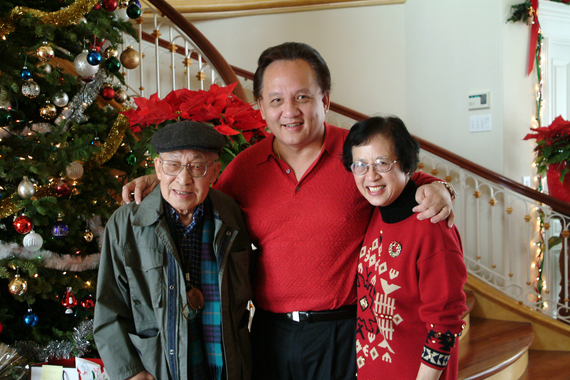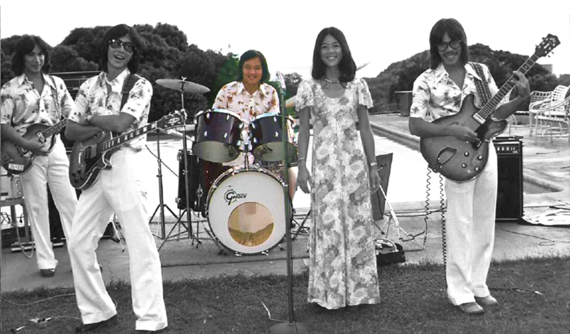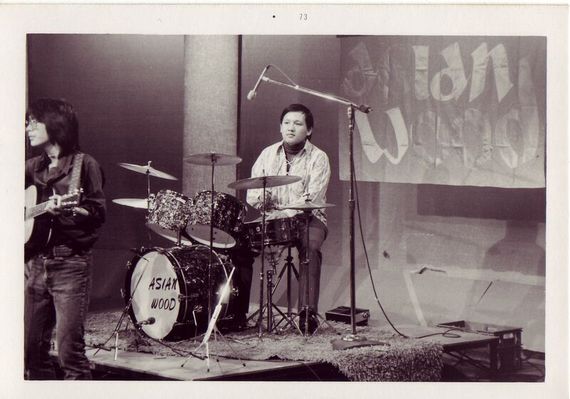
This is the first of a four-part story of Noel Lee, Monster Products and the lawsuit Monster Products filed against Beats headphones. The first part of our story is about Lee, his fascinating background and how he laid the underpinnings for building Monster―the first Monster into a major player in Consumer Electronics sector.
If I asked 100 people working in the larger Technology sector who Noel Lee was, I’m guessing less than 10 would immediately recognize the name or be able to tell me what he’s accomplished. Ask these same people what the company Lee built or what the Monster product line does, and you might have 20 light up with recognition. Most might say, “Oh, the energy drink?” or “The online jobs site?”
They’d be wrong.
It’s like a recent film on Dean Kamen’s new life-saving, mobile, water-purification technology, “Slingshot” (see my article last month on the movie and machine here). In the film, passersby are asked “Who is Dean Kamen?” Mostly vacuous stares abounded.
This kind of missing recognition of these Tech Inventors has got to stop.
My understanding is that Dean Kamen has one of the highest numbers or patents of any inventor, about 440. Well, this is a story of a man who has over 500 patents to his name.
Noel Lee is a most amazing character with a most amazing story to tell about his interests, loves and how they have transpired into his building a most interesting company. Monster Products has forward-thinking products, is always diversifying and has under-recognized impact across multiple consumer industries.
Lee recognized in the 1970′s―before anybody else gave a damn―that it makes a difference how we connect our different audio devices together. Back then, if you bought a beautiful Marantz, Kenwood or other amplifier/tuner and expensive speakers, then to Lee it made no sense to use the cheap, two-ply, brown zip cord that came for free with the purchase.
The engineer and audiophile in Lee (and he is both to the nth degree) told him that there was significant loss in the sounds our ears heard when this zip cord was involved. And everybody was buying these systems with the free, cruddy cord included. It made sense to buy better and more expensive cord rather than what the profit-motive had all the OEM’s including in their package offerings.
And so Lee hit his garage and built a better cable. And in that process built Monster Cable Products into a company with more than $350 million in annual revenue. With more than 6,000 products, the name is now Monster Products.
And buried in this story, mainly in the third part is how he was centrally responsible for the “Aha Moment” and then the designing, manufacturing, marketing. promotion and how he was responsible for the only distribution channels for Beats by Dre headphones. Noel Lee built that company (with just a little unfortunate use of the pseudo-celebrity name of Dr. Dre).
I’d like for this telling of the story of Noel Lee to communicate some insights into the man, his engineering abilities and his character.
With regard to character, I’ve consulted with a number of other high-level tech execs who have done business with him and those who haven’t too, but know his reputation. I’ve heard only good things about Lee. According to these sources, Lee’s always to be trusted and is good to his word. He also trusts others innately―perhaps more than he should. He likes to do business with a handshake and his honor-bound word. And, he’s never come close to reneging on a deal, surreptitiously inserting small-print shenanigans into agreements or cheating anybody.
Switching for a moment to the recently filed lawsuit against new Apple’ subsidiary “Beats by Dre,” Lee is characteristically emotional and stoical at the same time. Though he should certainly emerge with his original $150 million in stock he claims was cheated out of him, I think he deserves and might conceivably end up with a lot more: like the $3.2 billion Jimmy Iovine and Dr. Dre ended up banking as a result of their under-the-table footsie game with Apple.
Conspiracy and fraud in business frequently lands those resorting to it in handcuffs and prison. But for now, we shall see. (I will present some evidence on this matter, however the majority of what I write here and in the other parts of our story will be my educated opinion and best guesses. I hope to make a compelling case.)
Lee doesn’t much care about the money however, and is more concerned with the way these two seemingly unscrupulous characters (according to a number of other music industry movers) have made it appear through their sleight-of-hand chicanery as if they and they alone developed the electronics, manufactured and distributed the original Beats by Dre products. The truth is, that these two village-idiots of technology had virtually nothing to do with the electronic development, manufacturing and distribution of the product. Lee did it all.
Lee is only interested in getting some of the credit, not money. (But money he will get, I predict.)
This tells me Lee is an honest man.
Ergo, let us do a deep-dive on Noel Lee and his background.
Noel Lee was born in San Francisco into a post-World War II America that was booming. Literally.
“I was conceived in China and born in America,” Lee told me, “my father was a journalist in Hunan, China and after he graduated with his degree in Journalism, you have to remember this is 1947, 48 when he was sent over to America by the central news agency of China to open up a US office in San Francisco. My Dad said, ‘OK, we’re going to start a new life.’”
“He’d never been to the US. But the family said you have to stay here (in China) to have the baby (Noel). My Dad said ‘No, we’re going to go while she’s pregnant.’ So they came over on the last boat to hit the west coast of America before they shut down China. There was a dock strike on the west coast and they came on a freighter it wasn’t even a passenger boat. They arrived in October 1948; I was born on December 25, 1948; and the Communists took over in March of 1949. So if they had not taken that boat, the world would be stuck with bad cables (Lee laughs hardily). It just goes to show how lucky things can be. I always think of that Jimmy Stewart movie, ‘It’s A Wonderful Life.’” That reference is doubly intriguing because Noel was named “No-el” (though it’s not pronounced in the Christmas spirit) because of his Christmas birthday.
We have to remember this was a time of raucous, savage revolution in China and the Chinese Civil War, Mao and Chiang Kai-Shek at each other’s throats with the final resolution being Chiang fleeing to Taiwan and Mao inflicting his own special brand of genocide over the Chinese people which exists to this day.
Sarah C. Lee is Noel’s mother, who goes by “Nai Nai” to her eight grandchildren and eight more great-grandchildren. Mrs. Lee sat with me in the living-room of the modest San Francisco house where eldest child Noel and her four younger daughters played, learned and grew up. How proud and fundamentally happy she was came shining through like a lighthouse beacon through thick fog.
“I was married in March 1948 and Noel was born in December. We came to the US in October. So it was a big year for me. I was only 21 years old,” Mrs. Lee recalled. “A lot happening that was unexpected,” she smiled broadly and chuckled, “1948 was a big year for a young girl.”
Growing up in Nanking, Mrs. Lee was in the thick of (horrible) things in the then capital of China. In 1937, the Japanese invaded and inflicted to dreadful “Rape of Nanking” on the residents of her home city. Fortunately, she escaped the fate of many of her fellow Nanking citizens. This brutal massacre is perhaps only surpassed by the Holocaust and Stalin’s programmatic starving of millions of Ukrainians in the evil annals of human history.
In the subsequent 20 years or so, things would devolve into World War II and then outright revolution with the spoils and fate of hundreds of millions of Chinese ending up in the hands of the psychopathic, murdering, Communist hands of Mao.
I asked Mrs. Lee if she was frightened about coming to a new land and life in America. “Oh no, it was very dramatic and dangerous,” Mrs. Lee recalled wide-eyed, “the Japanese were taking young girls especially. One time the Japanese came to my village and we had to escape.” America was her salvation. The unspeakable acts that were committed in this degenerate abomination of Nanking could never be rectified nor offer any redemption whatsoever.
“So we got on a cargo ship,” Mrs. Lee told me humbly, “we were at the very bottom of the ship. I was very sick, I was pregnant and I couldn’t eat anything for the 18-day journey. We were lucky to get out of China.”
“We didn’t even think about or talk about going to America. We just went. We wanted to find a better life and America―we thought―was it.”
“We came here, my husband and I, with nothing. We had to work very hard.”
All of this tyranny, mutation and ultimately, life-saving immigration would have an indelible impact on the entire Lee family.
As a youngster, Lee’s family spoke and his first language was Mandarin. “My mother didn’t speak a word of English when she came over,” Noel Lee said, “as my mother learned English I did too as a little boy.”
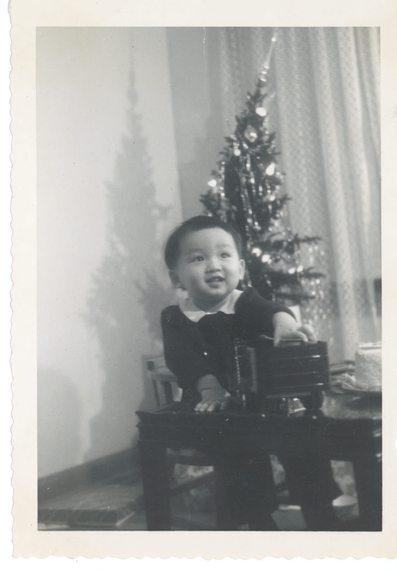

Lee always had a strong fascination with Music, even while very young ... this would be a harbinger of things to come
“But it was tough as a kid who was a minority; I got picked on. People called me ‘chink.’ At that time in San Francisco, there were very few Chinese here except for the railroad workers who spoke Cantonese and were from Canton, they were centered around Chinatown. Speaking Mandarin, we couldn’t communicate with the Cantonese, so there was a tremendous disconnect. But out around the avenues (of SF) it was all Hispanic and White. So I got picked on all the time. I got in fights like crazy (laughs again). It toughened me up a lot.”
“My parents were very strict about me getting a good career and learning, studying. They wanted me to be an engineer or accountant. Stable job and all that stuff. I always loved taking things apart and putting them back together. Figuring out how things work.”
“I started working when I was eight, delivering newspapers on my route. Going to the local toy store to do the assembly of all the bicycles and model cars. I always knew the instructions cold and could put anything together quickly. That’s where I started studying cars, how engines work and how they work and helped me become this kind of geeky, engineering type of guy.”
“But I also loved music and anything that could play music. I liked listening to music so much, so I started building Healthkits and Dynaco kits and figuring out how they all worked. This is how I got into the musical reproduction business.”
Lee started out with a purely technical/engineering mind, getting into and graduating with a Mechanical Engineering degree from California Polytechnic State University. “First, I went to City College because I didn’t have the money to go to Cal Poly yet and did really well there.”
As if that wasn’t geeky enough, Lee’s first job was working in the laser fusion area at Lawrence Livermore National Laboratory. “Well there are many fusion projects at Lawrence and the concept of fusion is clean nuclear power that has no radioactive byproduct. So everybody was searching for that because it was during the energy crisis. We were running out of coal, so the funding for fusion projects was very rich,” Lee told me.
“I got exposed to some of the best engineers, physicists, the highest grade equipment in the world. I worked my way up and had the ability to purchase the finest gear, microscopes, everything.” Lee worked there for five years right out of college and he must’ve received a lot of great experience there at Lawrence Livermore National Laboratory. He obtained a number of patents too.
Ominously, Lee was probably exposed to high doses of radiation in his job and in later years his spine was severely affected that made it very difficult for Lee to walk. This would lead to Lee’s current-day persona of “the guy on the flame-wheeled Segway.”
All the while Lee carried his love of music along with him everywhere. So much so that while he was trying to solve the world’s energy problem by day, Lee was also playing drums in a rock band at night and weekends and continued his love-affair with listening to and then playing music.
Lee’s band, “Asian Wood” played acoustic, Country-type, Rock such as Crosby, Stills, Nash & Young and America (“Horse with No Name”) and played locally in Northern California.
In 1974, they were offered a chance to go on a headlining world tour. “So I told the other band-members, I had a wife and kid and a career at the laboratory and I couldn’t go,” Lee told me recalling his sorrow. “The others were students and had no problem picking up and leaving. Their response was ‘Look Noel, we’re not going to go on the road without you.’ Then, at the age of 26, I had to decide whether I was going on the road with this band or continue my profession as an engineer.”
After something approaching six years, Lee quit his day job at the Laboratory and hit the road.
The entire band relocated to start its tour in Hawaii but within a few short weeks, the tour was unceremoniously cancelled.
The tour cancellation left Lee with a wife, young child and no job in Hawaii. He had to scramble. “It was scary being there on Oahu without a job. I had little savings. We ended up staying there and became the highest-paid band on Waikiki at the time. The great thing I learned there was a bit about business. That would help me later.”
Remaining for almost two years in Hawaii, Lee finally came home in 1976 and begrudgingly, went back to work for another national laboratory, this time Lawrence Berkeley National Laboratory, where part of the Manhattan Project had been located.
Riding his motorcycle across the San Francisco’s Bay Bridge on his commute every day was exciting and fun. At first. But then Lee had a yearning; a feeling he was meant to do something else―something he loved. Something with music.
Starting by tinkering with the flimsy cords that connected our amp/tuners at that time with their speaker boxes, Lee knew that using such insignificant connectors to bridge quality audio components was resulting in sub-standard sound emanating to the ears. So he looked very closely at and built better connector cables.
The experiences, psychology and reality of Noel Lee’s early life, gives us a clarity of vision about what kind of man he is; what’s important to him; and how much he trusts everybody he meets. His family history would suggest that he might approach people with suspicion and mistrust―after all, his family has had a distant and dangerous journey. But it is perhaps because of these dangers his parents faced and their ultimate salvation in America, that Noel Lee trusts, likes and respects everyone he meets. This would get him in some serious trouble when he would take the sharks from Beats at their word.
Coming up in Part Two of our story: We will get more into how Noel Lee started Monster Cable in his garage; diversified it from one basic product―better audio cable―into over 6,000 audio, video and Internet products. From that humble garage, Lee would build the newly-named Monster Products into a $350 million annual-revenue brand in the Consumer Electronics industry.
